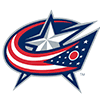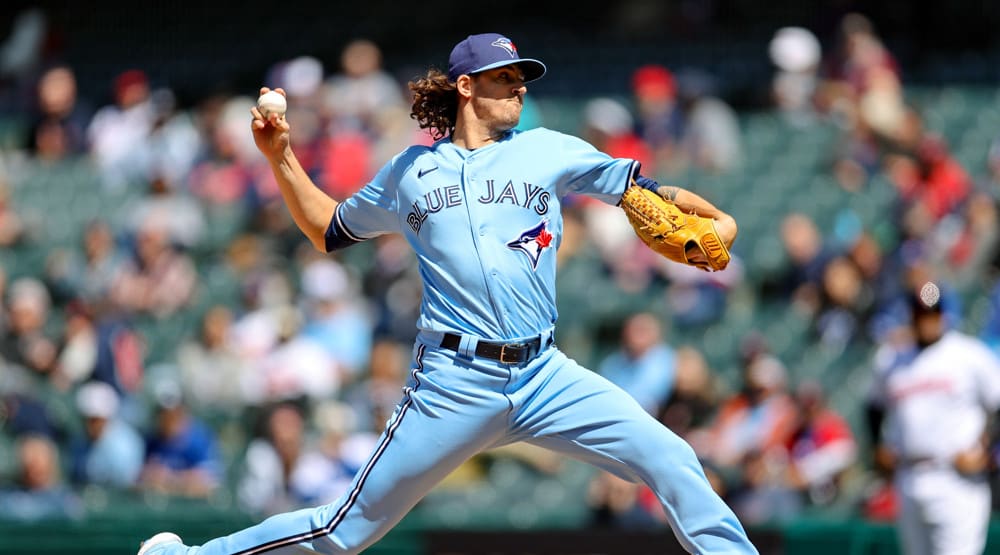These two stats give us a good idea of a pitcher's baseline skills and overall value.
This week, I am going to look beyond those metrics and examine batted ball data, specifically, groundball percentage (GB%) and infield flyball percentage (IFFB%). I will show the normal ranges for these types of batted balls, and look at a few pitchers at the extreme ends of the spectrum.
Groundballs Are Good
Batted ball data is normally lumped into groundballs, bunts, flyballs (which include infield flyballs) and line drives. People focus on groundball pitchers for one simple reason, groundballs don't go for home runs. Keeping the ball on the ground eliminates home runs and extra-base hits, which can lead to more runs and RBI. Groundballs also increase the possibility of a double play. In addition to being a desirable outcome, a pitcher's groundball rate stabilizes quickly (105 batted balls or 0.2 years) so a small sample can be used to measure their talent.
To get an idea of what is or isn't a good groundball rate, I compared groundball rates for all pitchers from 2011 to 2013 with at least 20 IP. I broke the pitchers into percentiles and divided by starters and relievers. Here is the data:
| Percentile | Starters | Relievers |
| 5% | 54.9% | 59.1% |
| 10% | 52.8% | 55.1% |
| 25% | 47.9% | 48.8% |
| 50% | 43.5% | 42.6% |
| 75% | 38.6% | 36.9% |
There are no nice breaks to
These two stats give us a good idea of a pitcher's baseline skills and overall value.
This week, I am going to look beyond those metrics and examine batted ball data, specifically, groundball percentage (GB%) and infield flyball percentage (IFFB%). I will show the normal ranges for these types of batted balls, and look at a few pitchers at the extreme ends of the spectrum.
Groundballs Are Good
Batted ball data is normally lumped into groundballs, bunts, flyballs (which include infield flyballs) and line drives. People focus on groundball pitchers for one simple reason, groundballs don't go for home runs. Keeping the ball on the ground eliminates home runs and extra-base hits, which can lead to more runs and RBI. Groundballs also increase the possibility of a double play. In addition to being a desirable outcome, a pitcher's groundball rate stabilizes quickly (105 batted balls or 0.2 years) so a small sample can be used to measure their talent.
To get an idea of what is or isn't a good groundball rate, I compared groundball rates for all pitchers from 2011 to 2013 with at least 20 IP. I broke the pitchers into percentiles and divided by starters and relievers. Here is the data:
| Percentile | Starters | Relievers |
| 5% | 54.9% | 59.1% |
| 10% | 52.8% | 55.1% |
| 25% | 47.9% | 48.8% |
| 50% | 43.5% | 42.6% |
| 75% | 38.6% | 36.9% |
There are no nice breaks to make the data easy to remember, so I will fudge the numbers a bit. To be considered a groundball pitcher, the pitcher will need nearly a 50% GB% with a value over 55% being elite. Also, any value under 40% will get the pitcher labeled as a flyball pitcher.
Infield Flyballs Are Better
Note: The infield flyball percentage I am going to use is the total number infield flyballs divided by the total number of batted balls. The league average value is around 6%. Some sites, like FanGraphs, calculate their IFFB% by dividing all flyballs by infield flyballs. I don't like this last method for the following made up example.Player: GB, LD, OF FB, IF FB
One: 50, 20, 22, 8
Two: 40, 20, 30, 10Player Two is more likely to induce a flyball (10% vs 8%), but using the second method, the percentages would switch (25% vs 27%).
Flyballs are the least likely batted ball to go for hit. The problem is the long flyballs which go for home runs. A flyball pitcher may find a home in a spacious home park that limits their home runs, but they will need to go on the road eventually. One subset of flyballs which are considered useful for a pitcher are infield flyballs. As Dave Studeman pointed out at The Hardball Times, 97% of infield flyballs are outs and 0% have been hit for home runs. Finally, a pitcher's IFFB% doesn't stabilize as quickly as GB%, but it is still fairly fast (288 batted balls or 0.6 years).
Like I did with GB%, I split the IFFB% values at different percentiles.
| Percentile | Starters | Relievers |
| 5% | 6.5% | 8.1% |
| 10% | 5.5% | 6.7% |
| 25% | 4.3% | 5.0% |
| 50% | 3.2% | 3.3% |
| 75% | 2.3% | 2.0% |
Again, there are no good breaks to help memorize the values. Fudging the numbers again, I ended up with these values for IFFB%:
Under 2.5 is bad
Over 4.5 is good
Over 5.5 is elite
With these values, here are the 2014 pitchers with their GB% and IFFB% and a few other useful stats (min 10 IP).
Notable Pitchers
Dallas Keuchel (63.5% GB%, 2.8% IFFB%) - What a groundball machine. He has the highest GB% among pitchers with 50 or more innings. He is a great example of taking what pitches work and only using those offerings. He has ditched a useless cutter and cut way down on his four-seam fastball. Now he's coming at hitters with his two-seamer, slider and change. While he doesn't have elite strikeout skills, he limits his walks and is probably one of the biggest surprises this season.
Tyson Ross (59.9% GB%, 1.0% IFFB%) - He has the next highest GB% (yep, over 3% lower then Keuchel) and is doing it with only two pitches, a fastball and slider. The slider usage stands at an insane 40%. It is the five-highest percentage from pitchers with a min of 100 IP since 2002. I don't like the high usage for the long term health of his arm, but it has turned him into a effective pitcher for the moment.
Clayton Kershaw (59.8% GB%, 1.6% IFFB%) - Is there anything this man can't do?
Chris Young (25.0% GB%, 8.1% IFFB%) - Young is pitching for the perfect team given his skill set. Hitters only hit flyballs off him and he is starting half of games at spacious Safeco Field. Additionally, Seattle has pitched him at other home run suppressing parks like Tampa, KC, Oakland (x2) and Miami. He is allowing a league leading .212 BABIP (tied with Cueto). His 3.15 ERA is totally being supported by the BABIP since he has a 4.99 FIP.
Yu Darvish (33.6% GB%, 4.6% IFFB%) - He has the highest IFFB% for pitchers over 100 innings. It almost seems unfair to have Darvish getting an additional 5% of his batters popping into easy outs. One item to note on Darvish and Kershaw. They are great with just their strikeout and walk numbers. Adding in the ability to get a higher than average percentage of hitters out with groundballs or pop outs just makes them that much better.
Besides being just good at inducing groundballs or infield flyballs, pitchers can can be good or bad at both depending on their pitch mix. Here are some pitchers who are in both the top 25% for IFFB% and GB%. Also, I will look at pitchers with numbers in the bottom 25%.
Kyle Gibson (55% GB%, 4.3 IFFB%) - Well, at least he has these two good traits because there is not much else to love with him. He has a 7% BB%, but his K% is only at 13%. He is going to be a pitcher who has some really good games when the BABIP fairy is on his side, but he'll have other games when he gets hit around with his heavy contact tendencies.
Chris Archer (47% GB%, 5.2 IFFB%) - His ability to keep the ball on the ground and induce weak flyballs has led to a minuscule 0.3 HR/9. This combo, if he can keep it up, may allow him to continue to post an ERA (3.38 - career) lower than his ERA estimators (FIP: 3.57, xFIP 3.75, SIERA: 3.77, career values).
Jordan Zimmermann (46% GB%, 4.5% IFFB%) - Zimmermann is one of my favorite pitchers in the game right now. He walks almost no one, and he gets a decent number of strikeouts. To top it all off, he generates a ton of weak contact. I think he may be the best pitcher with the tools he has been naturally given.
Max Scherzer (36% GB%, 2.4% IFFB%) - Scherzer has always been a flyball pitcher, so the low GB% is no surprise. The issue with him is that he is not getting any infield flies this year. Without the easy outs, his BABIP is up and so is his ERA. He may be a nice buy-low pitcher for the rest of the season as his BABIP may drop.
Aaron Harang (36% GB%, 2.3% IFFB%) - Nothing is really making sense with Harang. He has never been a groundball pitcher. With his flyballs, they must all be hit at a medium distance because he is at a career low in IFFB% and HR/FB% (also HR/9). It is tough to tell where he's headed over the rest of the season. His HR/9 could double from 0.6 to his career average of 1.2. Or, he could start getting more infield flies and see his .327 BABIP drop.
Ryan Vogelsong (36% GB%, 2.9% IFFB%) - He has transformed himself from a groundball pitcher to flyball pitcher with worse results. In 2011, when he was at his best, he had a 46% GB% and a 2.71 ERA. In 2014, his GB% is down to 36% and his ERA is up to 3.96. The main reason for the change is a move away from his two-seam fastball (22% usage in 2011 and 9% this season). Over his career, his two-seamer has generated a 53% GB% while his four-seamer is at 35% GB%. His four-seamer does get more swinging strikes (7% vs 5% for two-seamer) though. It may be in Vogelsong's best interest to start throwing is two-seamer more often.





























